Planning meals for your family? Choosing the right beef cuts can save money, simplify cooking, and keep dinners delicious. Here’s a quick breakdown of five top choices:
- Ground Beef: Affordable (around $6.02/lb), versatile, and perfect for tacos, casseroles, and pasta sauces. Works well with fillers like rice to stretch servings.
- Chuck Roast: Rich flavor at $7.88/lb. Ideal for slow-cooking methods like braising or stewing, making it tender and perfect for pot roast or shredded beef dishes.
- Flank Steak: Lean and flavorful, averaging $11.03/lb. Best for grilling or stir-fries when marinated and sliced thin against the grain.
- Bottom Round Roast: A budget-friendly option at $7.57/lb. Slow cooking brings out its tenderness, great for slicing into sandwiches or serving with veggies.
- Sirloin Steak: Bold flavor at $12.21/lb. Great for grilling, pan-searing, or broiling. A good choice for special meals or slicing into fajitas and stir-fries.
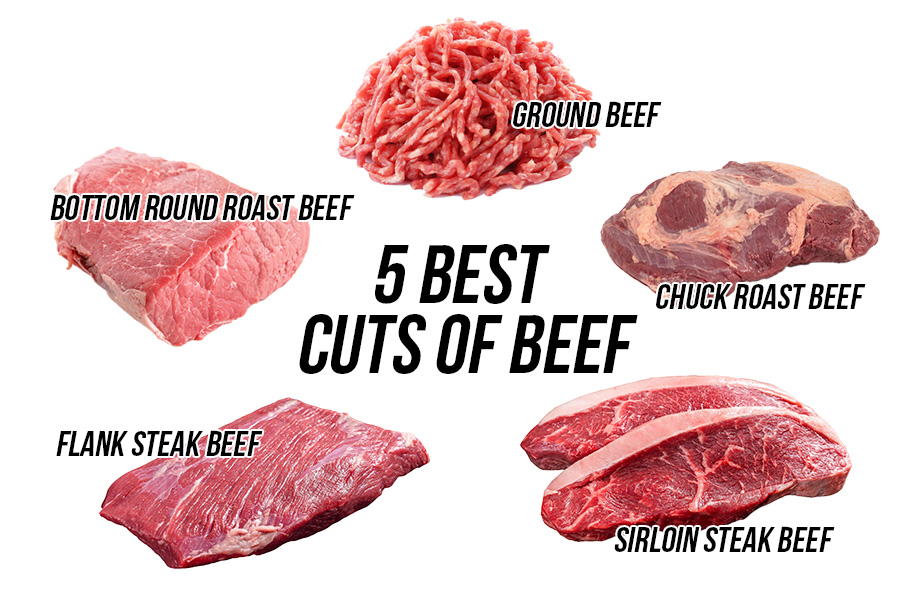
Quick Comparison
| Beef Cut | Cost per Pound | Best Use | Cooking Method |
|---|---|---|---|
| Ground Beef | $6.02 | Tacos, casseroles, pasta sauces | Pan-frying, grilling, baking |
| Chuck Roast | $7.88 | Pot roast, shredded beef | Braising, slow cooking |
| Flank Steak | $11.03 | Stir-fries, wraps, fajitas | Grilling, broiling, quick sear |
| Bottom Round | $7.57 | Roasts, sandwiches | Slow roasting, braising |
| Sirloin Steak | $12.21 | Fajitas, steak dinners | Grilling, pan-searing, broiling |
These cuts offer a mix of affordability, flavor, and flexibility. Whether you’re slow-cooking a roast or grilling a steak, there’s an option here to fit your budget and preferences.
Feed Your Family w/These Budget Cuts of Meat
1. Ground Beef
Ground beef is a kitchen staple in many American households, prized for its versatility and affordability. It works well in countless recipes, making it a go-to ingredient for families looking to stretch their grocery budget without compromising on variety or flavor.
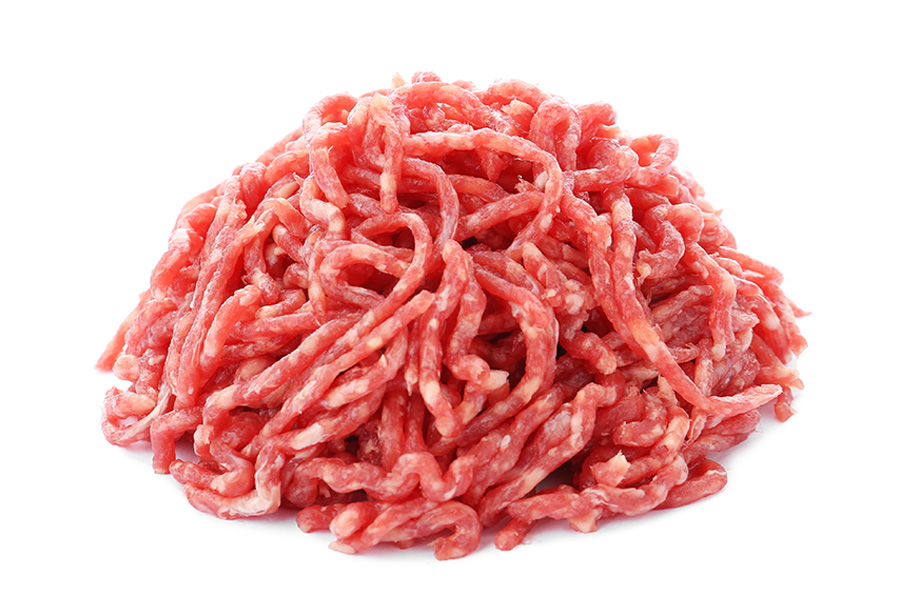
Cost-effectiveness
In 2024, the average price of lean ground beef was $6.92 per pound, though sales brought prices down to as low as $3.97 per pound. These discounts offer a great opportunity to save. You can also stretch ground beef further by adding fillers like rice, potatoes, or vegetables. For example, incorporating 1 cup of filler per pound of meat can increase the yield by 50% and reduce the cost per serving by 33%. Buying in bulk during sales and freezing portions for later use is another smart way to maximize savings.
But affordability isn’t ground beef’s only strength – it also shines in its ability to adapt to different cooking methods and cuisines.
Cooking method options
Ground beef’s flexibility is unmatched, making it suitable for a wide range of dishes. Whether you’re sautéing it in a skillet or incorporating it into baked recipes, it’s easy to work with. For most recipes, cook ground beef in a lightly oiled skillet over medium-high heat until browned and it reaches an internal temperature of 160°F.
"Ground beef is an affordable and versatile protein that’s also incredibly family-friendly."
– Sheela Prakash, Food Network Kitchen
From tacos and chili to casseroles, lasagna, meatballs, and stir-fries, ground beef can transform into countless family favorites. A University of Minnesota study from January 2024 revealed that families who used ground beef in at least three meals per week saw a 20% reduction in their grocery bills and a 15% increase in protein intake.
Flavor profile
Ground beef has a mild flavor, making it the perfect base for experimenting with spices and seasonings. As Irena Macri notes, "Ground beef can be quite bland on its own, so use spices and seasonings to add flavor and variety to your meals". Adding spices like cumin, garlic powder, or fennel early in the cooking process helps bring out their full flavors. Aromatic vegetables, such as those in a sofrito or mirepoix, can also elevate the taste.
For variety, try seasoning ground beef with Italian herbs like oregano and thyme, Asian flavors like soy sauce and Chinese five-spice, or Mexican spices like chili powder and cumin. Even a quick 15–30 minute marinade can make a big difference.
Ease of preparation and storage
Ground beef is perfect for batch cooking. You can prepare it in bulk, portion it into freezer-friendly containers, and have quick meal options ready for busy nights. Larger family packs often provide better value, making them a smart choice for those cooking in bigger quantities.
It’s also a fun ingredient for involving kids in the kitchen. Whether they’re helping season the meat, shape meatballs, or assemble tacos, ground beef provides an opportunity for family bonding while teaching valuable cooking skills. Its versatility ensures that it can be used in different meals throughout the week, keeping dinner interesting and stress-free.
2. Chuck Roast
Affordable and full of flavor, chuck roast is a fantastic choice for family dinners. This cut, taken from the shoulder, is known for its rich marbling, which brings plenty of flavor without a hefty price tag.

Cost-effectiveness
As of June 2025, USDA Choice boneless chuck roast averaged $8.04 per pound in the South Census Region, with sales sometimes dropping the price as low as $4.99 per pound.
"Chuck roast is a cut of meat that is extremely cost effective as well, so you’ll impress your guests without breaking the bank." – Claire Burns
A 3–4 lb chuck roast can easily feed a family of four, often with enough leftovers for sandwiches, tacos, or soups. This makes it an excellent option for meal planning, combining affordability with versatility. Plus, its flavor and texture shine when paired with slow-cooking techniques that make the meat tender and juicy.
Cooking Method Options
Chuck roast thrives with low and slow cooking methods, which help break down its connective tissues for a melt-in-your-mouth texture.
Braising is one of the most popular ways to cook this cut. Start by searing the meat on all sides in a Dutch oven to lock in flavor. Then add a liquid – like beef broth or red wine – cover tightly, and let it cook in the oven at 275–325°F for 3–5 hours. The roast is done when its internal temperature reaches 190–195°F.
For added convenience, you can also use a slow cooker or pressure cooker. Each method requires slight adjustments in cooking time and temperature, but all deliver tender, flavorful results. Once cooked, let the roast rest for 15–30 minutes before slicing against the grain to ensure maximum tenderness.
Flavor Profile
Chuck roast has a deep, robust flavor that intensifies during slow cooking. Its natural marbling enhances its richness, making it a perfect match for traditional comfort food seasonings. Pair it with classic pot roast vegetables like carrots, potatoes, and onions for a hearty meal.
For a twist, experiment with global flavors. One creative idea is to use Korean-inspired seasonings like gochujang, soy sauce, and honey to reinvent the classic pot roast. This cut’s versatility means you can easily adapt it to suit a variety of cuisines.
Ease of Preparation and Storage
Chuck roast is a lifesaver for busy households. Once it’s in the oven, it requires very little attention, freeing you up for other tasks. Its forgiving nature also makes it ideal for meal prepping.
Cook a roast on Sunday, and you’ll have the base for multiple meals throughout the week. Leftovers can be portioned and frozen for future use. Whether served in sandwiches, over rice, or tossed with pasta, chuck roast provides endless options for quick and satisfying weeknight dinners.
"Many cuts of beef can be used for pot roast, but I have found that a chuck roast has the perfect blend of affordability and marbling." – The Domestic Man
3. Flank Steak
Flank steak is a flavorful and budget-friendly option, making it a go-to choice for family dinners.
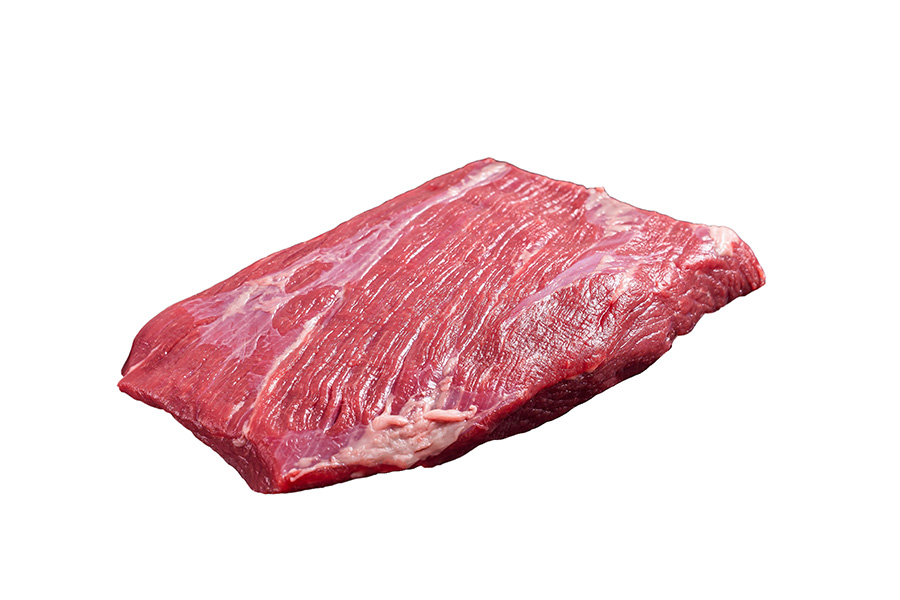
Affordable and Versatile
Flank steak is one of the most economical cuts of beef, especially when you buy it whole and slice it yourself. This approach not only saves money per pound but also allows you to use it in a variety of dishes, from fajitas to stir-fries, giving you more bang for your buck.
Shopping for family packs or bulk bundles can further reduce the cost. While the upfront price might seem higher, the number of meals you can create from a larger piece makes it a smart investment for meal planning.
Best Ways to Cook It
Flank steak shines when cooked using high-heat, quick methods like grilling, broiling, or pan-searing. The trick is to keep the cooking time short to avoid toughness.
Marinating is a must for this cut. A marinade not only adds flavor but also helps tenderize the meat. Let it soak for at least 2 hours, but ideally 4–12 hours, for the best results. The acids in the marinade break down the tougher fibers, making the steak more tender and flavorful.
"Flank steak is a specialty cut, famous for its intense flavor and for how tough it can be if improperly cooked…The real trick is to keep your Flank steak grill time to a minimum." – Kansas City Steaks
For the best texture, cook flank steak to medium or less. After cooking, let it rest for about 10 minutes before slicing. For even better tenderness, you can pound the steak with a mallet before marinating.
Bold, Beefy Flavor
Flank steak is known for its rich, beefy flavor, which pairs beautifully with bold marinades and seasonings. Its lean profile gives it a clean taste that works well with Mexican and Asian-inspired dishes. Think beef fajitas, Korean bulgogi, or a hearty stir-fry – flank steak easily soaks up flavors, making it a versatile choice for these cuisines.
Easy to Prepare and Store
Preparation is straightforward. After cooking, slice the steak against the grain to ensure each bite is tender.
For meal prep, flank steak is incredibly convenient. You can marinate it up to 24 hours in advance. When it’s time to cook, simply take it out of the fridge, cook it quickly, and slice it for serving.
Storage is equally simple. Cooked flank steak lasts 3–4 days in the refrigerator if properly covered. For longer storage, wrap raw steak in freezer paper or use an airtight container before freezing. Leftover slices stay fresh for 4–5 days, making them perfect for quick meals like sandwiches, salads, or wraps.
sbb-itb-5ae85c5
4. Bottom Round Roast
Bottom round roast is an excellent option for families aiming to serve hearty, satisfying meals without breaking the bank.
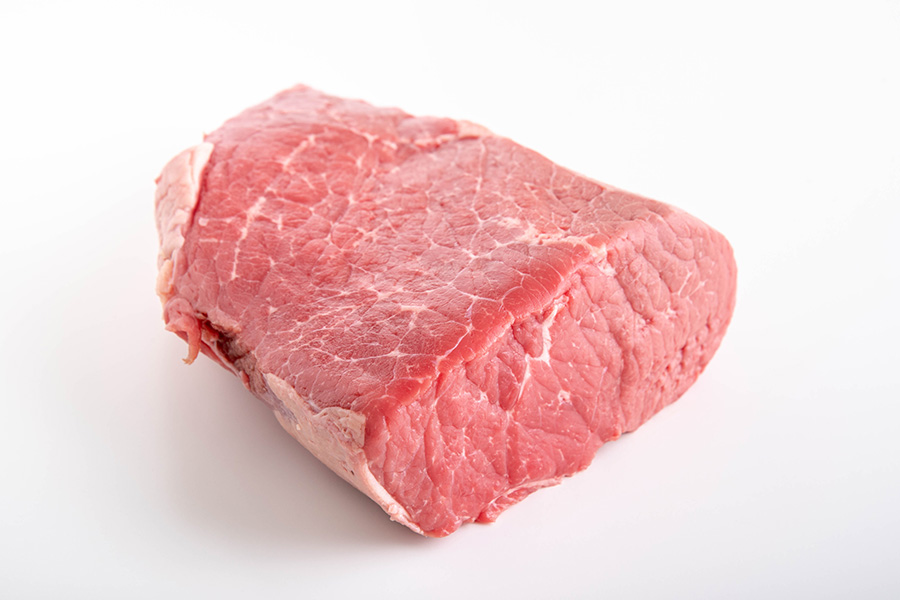
Budget-Friendly Choice
At about $5.89 per pound, bottom round roast is an economical alternative to pricier cuts like premium steaks. Despite its lower cost, it still provides a lean and nutritious source of beef.
"The Bottom Round Roast is your classic go-to option when you need a Pot Roast. This is a very affordable cut that holds up well under many different cooking methods." – Farmingdale Meat Market
Let’s explore the best ways to cook this versatile cut.
Cooking Techniques
Slow cooking methods work wonders for bottom round roast, as they tenderize the meat by breaking down connective tissues over time.
- Braising: Start by searing the roast on all sides to lock in flavor. Then, cook it in a Dutch oven at 325°F for about 45 minutes to an hour per pound. Keep it tightly covered to preserve moisture.
- Slow Cooker: Perfect for busy households. After searing, let it cook on low for 6–8 hours.
- Instant Pot: For a quicker option, cook on high pressure for 20–25 minutes per pound, followed by a natural pressure release.
High-temperature cooking methods, like roasting at high heat, should be avoided as they can make the meat tough and chewy.
Taste and Seasoning
Bottom round roast has a lean, clean beef flavor that shines with the right seasoning. Its smaller surface area to volume ratio means it can handle bold flavors without being overwhelming. A dry rub made with dried herbs, garlic, salt, and pepper is a great way to enhance its natural taste.
Pairing it with garlic herb butter, horseradish, or a rich pan sauce made from the cooking juices can add an extra layer of flavor to your dish.
Simple to Prepare
Preparing a bottom round roast is straightforward. Generously season the roast, sear it on all sides for flavor, and then cook it slowly to achieve tender, juicy results. When it’s ready, slice it thinly against the grain to maximize tenderness.
This cut makes it easy to create a delicious, satisfying meal with minimal effort.
5. Sirloin Steak
When it comes to balancing taste and cost, sirloin steak stands out as a fantastic choice for families. It wraps up our list with its rich flavor and affordability, making it a go-to option for budget-friendly meals.
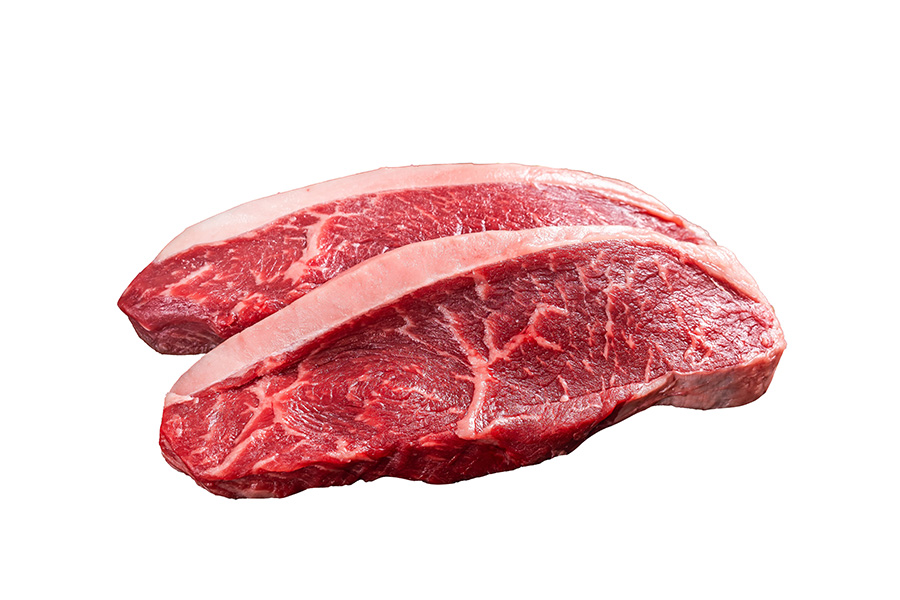
Affordable and Flavorful
Sirloin steak offers a great mix of quality and cost. At grocery stores, it typically costs between $0.50 and $3.00 per ounce, which is far more wallet-friendly than pricier cuts like filet mignon or Wagyu beef. Even more economical options include sirloin tip steak, praised as a "superstar in the world of ‘low-cost cooking’", and minute steaks, which are thinly sliced and perfect for quick dinners.
Versatile Cooking Options
One of the best things about sirloin steak is its adaptability in the kitchen. You can grill it, pan-sear it, use the stove-to-oven method, try reverse searing, or even cook it sous vide or in an air fryer at 400°F. The reverse searing technique, where the steak is cooked at a low temperature in the oven and then finished with a high-heat sear, is particularly popular for achieving a tender result. As Valerie Brunmeier points out:
"The correct cooking method is the key to creating a tender result with this lean cut".
Modern methods like sous vide and air frying make it even easier to prepare sirloin steak to perfection, adding to its appeal for busy families.
Bold Flavor Profile
Sirloin steak delivers a strong, beefy flavor that shines in a variety of dishes. Compared to fillet or rib-eye steaks, it has a much deeper, richer taste. Quattro Ristorante captures it perfectly:
"When tasting it, you’d notice a much bigger and beefier flavor than fillet or rib-eye steaks. This makes it perfect for high-flavored sauces, especially those containing onion or a small amount of chili".
Its robust flavor pairs well with bold sauces and seasonings, making it a versatile addition to meals like fajitas, stir-fries, or steak bites. Amber Buckheister shared in July 2025 how her family of six stretches one sirloin steak by slicing it into thin strips for dishes like mock beef chipotle bowls, fajitas, quesadillas, and beef ramen bowls.
Easy to Prepare and Store
Cooking sirloin steak is straightforward. A quick high-heat sear locks in juices, and using a meat thermometer ensures you hit the perfect level of doneness. As one expert explains:
"Top sirloin strikes a perfect middle ground with its lean yet flavorful profile, making it ideal for various cooking methods".
Letting the steak rest after cooking allows the juices to redistribute, ensuring every bite is tender and juicy. Fresh sirloin keeps well in the fridge for 3–5 days, and frozen portions can last for months. Its even thickness makes portioning simple, and leftovers are incredibly versatile – great for sandwiches, salads, or pasta dishes.
Beef Cut Comparison Chart
Compare beef cuts based on cost, flavor, cooking methods, and versatility. This chart provides a handy reference to help you choose the right cut for your family’s meals.
| Beef Cut | Cost per Pound (May 2025) | Flavor Profile | Best Cooking Methods | Cooking Flexibility |
|---|---|---|---|---|
| Ground Beef | $6.02 | Mild and versatile | Pan-frying, grilling, baking | Excellent – works for chili, tacos, meatballs, pasta sauces, and more |
| Chuck Roast | $7.88 | Rich and beefy | Braising, slow roasting, stewing | Very Good – perfect for shredded beef in tacos, stews, or sandwiches |
| Flank Steak | $11.03* | Lean and flavorful | High-heat grilling, broiling | Good – great for salads, wraps, or stir-fries when sliced thin |
| Bottom Round Roast | $7.57 | Lean with mild flavor | Slow roasting, braising | Good – a budget-friendly choice for roasting and slicing thin |
| Sirloin Steak | $12.21 | Bold and beefy | Grilling, pan-searing, broiling | Very Good – offers a mix of tenderness and flavor, ideal for special dinners |
*Based on average steak prices from May 2025.
Use this chart to match each cut’s characteristics with your cooking preferences and budget.
Making Sense of the Options
The price differences among these cuts make it easier to plan meals within your budget. For example, ground beef is a budget-friendly option at just over $6 per pound, making it a staple for everyday meals like burgers, pasta sauces, or tacos.
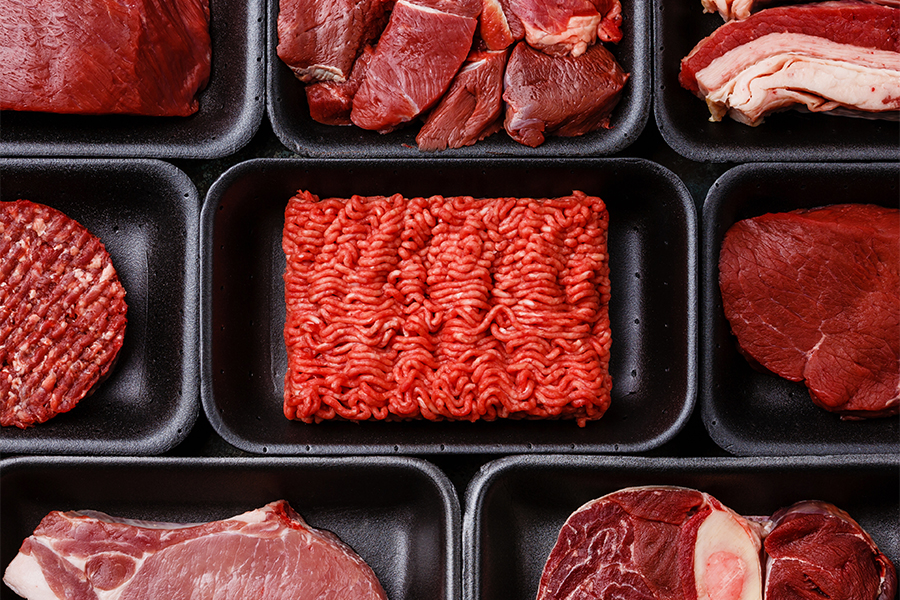
On the other hand, sirloin steak, at over $12 per pound, is better suited for special occasions thanks to its bold flavor and tenderness. Mid-range cuts like chuck roast and bottom round roast (both around $7.50–$8.00 per pound) are excellent for feeding a crowd without breaking the bank.
Flavor and Cooking Methods
Each cut brings something unique to the table. Sirloin steak shines with its bold flavor and tenderness, perfect for grilling or broiling. Chuck roast and bottom round roast, though tougher, develop rich, complex flavors when slow-cooked. Meanwhile, flank steak, known for its leanness, benefits from marination and thin slicing against the grain to enhance its taste.
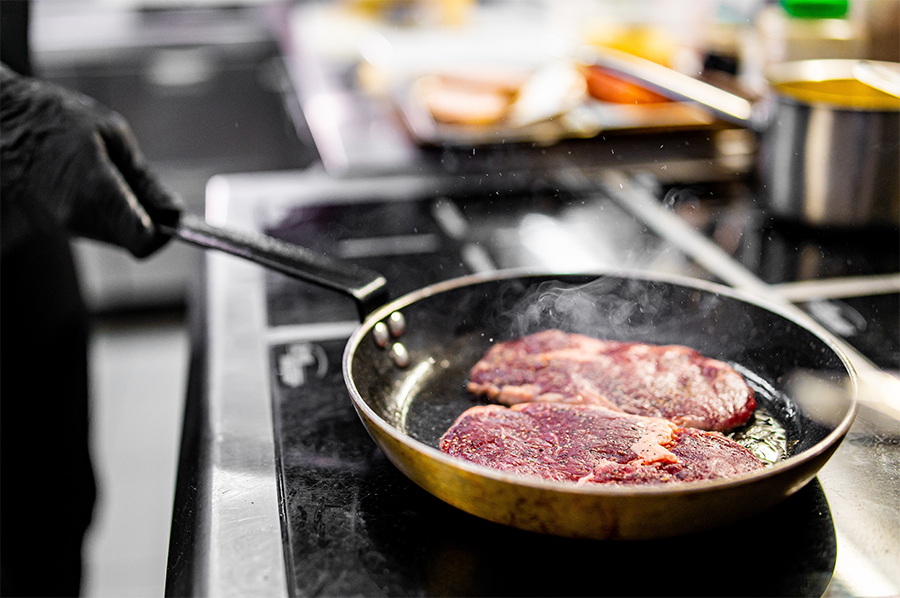
The cooking method plays a crucial role in bringing out the best in each cut. Tougher cuts like chuck roast and bottom round roast thrive with slow-cooking techniques like braising and stewing, which break down their connective tissues. In contrast, tender cuts like sirloin steak or flank steak excel with quick, high-heat methods such as grilling or pan-searing.
Conclusion
Selecting the right beef cuts for your family meals doesn’t have to be complicated. Each cut brings something special to the table. Ground beef is perfect for quick and easy weeknight meals, while chuck roast and bottom round roast are excellent choices for hearty, budget-friendly dishes. Sirloin steak adds a bold, rich flavor for those special occasions, and flank steak is a lean, versatile option that works beautifully in stir-fries, salads, or wraps when sliced thin against the grain. By considering cost, flavor, and versatility, you can master smart family meal planning.
A successful plan balances affordability, taste, and cooking flexibility. For example, slow cooking can transform tougher cuts into tender, flavorful dishes. On the other hand, leaner cuts like flank steak benefit from marinating, which enhances both tenderness and flavor.
When it comes to quality, minimally processed beef delivers unmatched taste and texture. Grass-fed beef, in particular, stands out with higher levels of omega-3s and essential nutrients. If you’re looking for premium options, Wild Country Meats offers USDA-inspected, traceable beef. Their custom meat processing services and retail options include fresh steaks, roasts, and ground beef, with delivery available within a 50-mile radius of their Oklahoma locations. These high-quality cuts make it easier to create meals that are both delicious and budget-friendly.
With these five versatile cuts in your repertoire, you’ll have everything you need to prepare a variety of satisfying family dinners that won’t break the bank.
FAQs
What are the best beef cuts for grilling or slow cooking, and how do you choose the right one?
When it comes to grilling, you’ll want to pick tender, well-marbled cuts like ribeye, sirloin, or filet mignon. These cuts can handle the intense heat of the grill and deliver juicy, flavorful bites every time.
For slow cooking, tougher cuts such as chuck roast, brisket, or beef shoulder are the way to go. These cuts are packed with connective tissue that breaks down beautifully during long, low cooking, resulting in tender, melt-in-your-mouth meat with rich flavor.
Keep in mind the fat content and muscle structure when selecting your cut. Well-marbled cuts are perfect for grilling, while tougher ones excel in slow-cooked dishes. Pairing the right cut with the right cooking method is the key to getting the best flavor and texture from your meal.
What are some tips for keeping family meals affordable while using different cuts of beef?
To keep family meals affordable, opt for budget-friendly beef cuts like chuck, round, brisket, or sirloin tip. These options are easy on the wallet and can be used in a variety of dishes, from slow-cooked stews to hearty roasts.
Consider buying beef in bulk, such as a quarter or half, to stretch your budget further. This approach not only offers savings but also provides a variety of cuts to stock your freezer. You can portion them as needed, reducing waste and ensuring you always have something on hand.
Lastly, stick to cost-effective cooking methods like braising, slow cooking, or roasting. These techniques bring out the best in less expensive cuts, enhancing their flavor and tenderness. With these tips, you can prepare satisfying and flavorful meals for your family without breaking the bank.
What are the nutritional benefits of different beef cuts, and how do they compare?
Different beef cuts offer various nutritional perks, largely influenced by their fat content and nutrient levels. Leaner cuts such as sirloin, round steak, and top sirloin are lower in fat and calories, making them great picks for those aiming to eat healthier. These cuts pack a punch when it comes to protein, iron, and zinc – key nutrients that help sustain energy and support overall health.
In contrast, fattier cuts like ribeye deliver more fat, which amplifies flavor and provides extra energy. While they may not suit low-fat diets, these cuts are ideal for indulgent dishes or recipes where a richer taste is the goal. Ultimately, the best choice depends on your family’s dietary preferences and the type of meal you’re preparing. For a balance of nutrition and versatility, lean cuts often stand out as the go-to option.

